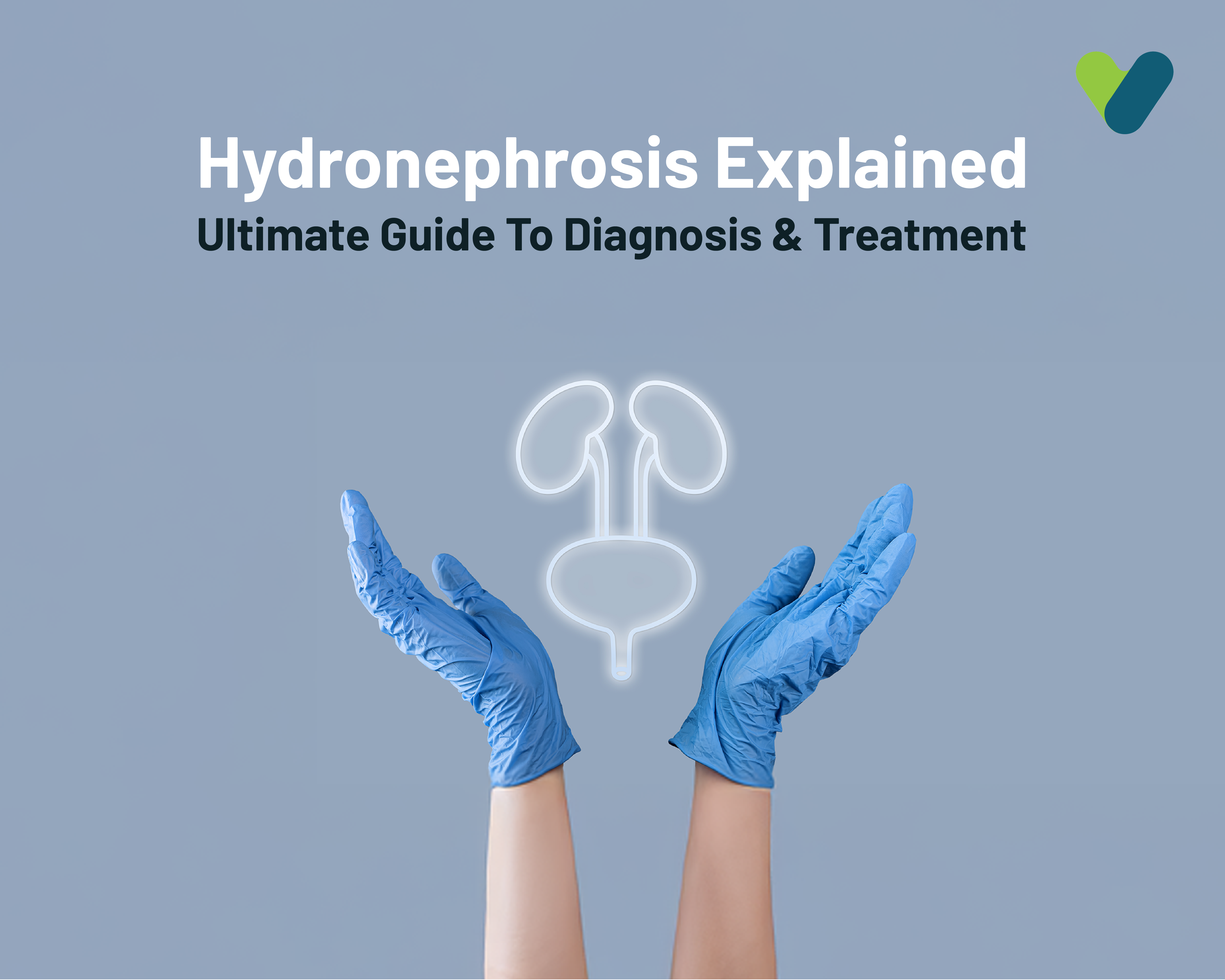Aman Singh, age 45 years, from Delhi, for the past one week had severe abdominal pain along with a problem in urination. Initially, he thought that these symptoms were because of some minor ailment, but soon the distress of Aman reached such levels that he had to see a doctor immediately. Complete investigations along with ultrasound indicated that he was suffering from hydronephrosis-a condition wherein either one or both kidneys inflate due to the storage of urine. Amen's case is not unique; hydronephrosis may affect anybody, from newborn babies to adults. It requires timely diagnosis and treatment to avoid any complications. In this blog, we are going to discuss what is hydronephrosis, its causes, symptoms, diagnosis, prevention, and treatment options.
What is Hydronephrosis?
Hydronephrosis is the swelling of a kidney owing to the backup of urine. The condition arises when there is an obstruction to the passage of urine at any point in the passage from the kidneys through the ureters and bladder or from the urethra. This blocks the flow of urine, causing the kidneys to swell. If left untreated, hydronephrosis can result in kidney damage or other complications. It can occur on one side or both sides- unilateral or bilateral, respectively.Hydronephrosis Causes
There are several causes of hydronephrosis, including:- Obstruction along the Urinary Passage: Such narrowness brought about by stones, tumors, and strictures impedes the normal flow of urine, thus creating hydronephrosis.
- Enlargement of the Prostate Gland: When the prostate gland is enlarged in men, it compresses the urethra, thus retaining urine in the kidneys, swelling them.
- Congenital Conditions: Some people are born with abnormalities of the passage of urine, predisposing them to hydronephrosis.
- Pregnancy: Sometimes the expanding uterus compresses the ureters, producing slight, temporary hydronephrosis.
- Hydronephrosis Fetal: Sometimes the developing kidneys of an unborn baby have difficulty draining urine and the fetus has hydronephrosis, detected on prenatal ultrasound tests.
Hydronephrosis Symptoms
The symptoms of hydronephrosis may include the following, depending on the cause and severity of the condition and whether one or both kidneys are affected:- Flank or Abdominal Pain: A dull ache or sharp pain, usually on the side of the affected kidney.
- Difficulty Voiding: Weak flow of urine, a feeling of not being able to empty your bladder completely, or burning sensation while passing urine.
- Frequent Voiding: Increased frequency of urination, especially nighttime voiding.
- Nausea and Vomiting: This is often seen in more severe conditions.
- Fever and Chills: These conditions can also indicate a possible occurrence of a urinary tract infection.
Hydronephrosis Diagnosis
Hydronephrosis is diagnosed with a combination of medical history, physical examination, and imaging tests to diagnose the disorder.- Ultrasound: This modality is primarily used to diagnose hydronephrosis; it outlines dilatation and detects obstruction.
- CT scan or MRI: These are tests that give detailed pictures of your urinary tract. Your doctor may order an imaging test to diagnose the underlying cause and assess the severity of the condition.
- Blood and Urine tests: To check for infection, kidney function, and identify causes.
Hydronephrosis Prevention
Though it is not possible to completely prevent hydronephrosis from occurring, the following can be done to reduce the chances:- Stay well-hydrated: A good amount of water intake aids the body in flushing out toxins and lessens the possibility of the formation of a kidney stone.
- Treat Underlying Conditions: Frequent check-ups and management of an enlarged prostate, frequent UTIs, or congenital abnormalities of the urinary tract may include ways to prevent hydronephrosis.
- Healthy Lifestyle Choices: A healthy diet and a restriction of high-sodium foods are helpful in maintaining kidney health.
Hydronephrosis Treatment
Treatment options for hydronephrosis depend on the underlying cause of hydronephrosis, the severity of signs and symptoms, and whether one or both kidneys are affected:Medication: When there is a urinary tract infection, then antibiotics can be prescribed. Pain relievers can also help alleviate the pain and discomfort. Procedure for Drainage: When the accumulation of urine is more profound, a catheter or stent may be placed to facilitate the process of draining and help take off the pressure. Surgical Intervention: In grave instances, surgery is considered to remove blockages, repair congenital defects, or repair the damaged parts of the urinary system. Fetal Hydronephrosis Treatment: Most of them get resolved before birth, whereas severe ones may require early delivery or postnatal surgery.
When to See a Doctor?
You must immediately seek medical intervention in case you are experiencing severe flank pain, difficulty urinating, fever, or blood in the urine. Early diagnosis and treatment will help in keeping you away from complications like permanent kidney damage.Conclusion
If diagnosed early, hydronephrosis can often be brought under good control with the aid of medication coupled with supportive lifestyle modifications. Again, as is evidenced in the case of Aman Singh, early recognition of symptoms and thus timely medical advice may help avoid complications related to hydronephrosis. Awareness and education regarding hydronephrosis are very key to seeking timely intervention and maintaining kidney health. Disclaimer: The content provided in this article is intended solely for educational purposes and should not be considered a replacement for professional medical treatment. Given the distinct needs of each individual, it is advisable for the reader to seek guidance from their healthcare provider to assess the relevance of the information to their specific circumstances.References:
- Hydronephrosis. National Kidney Foundation. https://www.kidney.org/kidney-topics/hydronephrosis-0. Accessed Aug. 20, 2024.
- Sverker Ek, Karl-Johan Lidefeldt, Lena Varricio. Wiley’s Obstetrics and Gynaecology Online Library [Internet]; Fetal hydronephrosis; prevalence, natural history and postnatal consequences in an unselected population; [Published 2010 Dec 31] [cited 2024 Aug 30]; Available from: https://obgyn.onlinelibrary.wiley.com/doi/full/10.1080/00016340701714802
- Sultan Abdulwadoud Alshoabi, Dahhan Saleh Alhamodi, Mohammed Ali Alhammadi, and Abdullah Fahad Alshamrani.[Published 2021 Sep-Oct]. Etiology of Hydronephrosis in adults and children: Ultrasonographic Assessment in 233 patients; [cited 2024 Aug 30]; Available from: https://www.ncbi.nlm.nih.gov/pmc/articles/PMC8377938/
- Liji Thomas. Obstructive Nephropathy - Uropathy; In: News Medical Life Sciences Journal [Internet]; [updated 2019 Feb 27]; [cited 2024 Aug 30]; Available from: https://www.news-medical.net/health/Obstructive-Nephropathy-Uropathy.aspx


